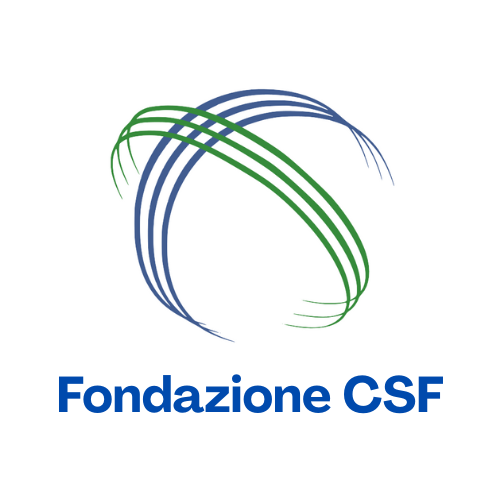Flavio Brugnoli
Comment no. 177 - 4 May 2020
The week of the first steps in Italy of Phase 2 of the Covid-19 emergency was supposed to be the week of the launch of the “Conference on the Future of Europe”, starting on 9 May (on the 70th anniversary of the Schuman Declaration). This has been postponed until a future date, while the focus remains on the reopening of economic and social activities paralysed by the pandemic. Indeed, national, European and world political agendas have all been rewritten by the exigences of the coronavirus crisis. However, it is now clear that a significant part of the EU’s future is already being forged, under the pressure of an unprecedented crisis.
Putting aside the rows over emergency response times, the achievements at the European level, and what still remains to be done, provide an excellent overview of the points at which to act. For a Centre that studies “federalism” – understood as the division of roles, resources and responsibilities among interdependent multi-levels of government – there are many identifiable links with ideas and proposals launched over the years: from the difficulties experienced in the relationship between the state and regions in Italy (also compared to a “Federal Republic” such as Germany), to the strengthening of the European government and budget, up to the failure to “govern globalisation”. But let’s proceed in order.
We cannot provide a comprehensive list here of the health and economic measures introduced by European institutions, and first and foremost by the Commission, as a response to the crisis. As it is well known, under the Treaties the Union has limited competences on “public health”: its action “shall complement national policies”, and this action “shall cover the fight against the major health scourges”. Nonetheless, the decisions taken have had an impact: such as leaving the internal market open for medical equipment, calls for strategically stockpiling this equipment, activating the European Civil Protection mechanism, and trying to provide Member States with consistent guidelines to exit the emergency together (which is controversial within individual countries as well).
In the economic sector, the price of the lockdown, however necessary, is very high, with an estimated drop in EU GDP between 5% and 10% in 2020. Moreover, there is now a widespread belief that Covid-19 constitutes a symmetrical shock, for which individual countries are not to blame, even if they have been affected at different times. However, the state of their public finances, and in particular of their debt capacity, is not symmetrical. Solidarity and sustainability are elements that must both be borne in mind in order to understand which choices to make, being aware that a Eurozone crisis would affect all Member States.
The efforts of the European Central Bank have been, once again, fundamental. After an initial slip-up by its President over the spread of coronavirus, the ECB quickly put instruments in place that were more suited to the scale of the crisis. First of all, the Pandemic Emergency Purchase Programme allocated €750 billion at least until the end of 2020, with purchases of public and private securities (and reduced guarantees required), which may reach up to €220 billion for Italy. This is an essential protective umbrella which will also provide time to launch other measures, in parallel to monetary measures.
Italy was able to build a core group of alliances, which resulted in a letter, dated 25 March, with another eight Eurozone governments (including France and Spain), requesting that a “common debt instrument” be created. The debate then focused on the magic – or forbidden – word “Eurobond”, not to be understood as mutualisation of past debts, but rather as a shared commitment for future debts. This action has helped to set in motion a number of responses, faster than those of the 2008 crisis.
The Stability and Growth Pact (SGP) had already been suspended, and state aid rules eased. A package of new resources focusing on three pillars was then created, and will be activated as of 1 June, with: credit lines from the European Investment Bank of up to €200 billion; the creation of the SURE (Support to Mitigate Unemployment Risks in an Emergency), a European temporary fund complementary to the national ones, with resources of up to €100 billion; and a credit line from the European Stability Mechanism (ESM), of up to 2% of each country’s GDP, to be used to cover “direct and indirect costs” of the health emergency.
The fourth and decisive pillar is the “Recovery Fund”, proposed by France, and adopted by the other Member States, with a request that that the Commission define its features. There are various points that need to be clarified: the size of the Fund, its (sectoral and geographical) destination, a (quantitative and chronological) balance between subsidies and loans, as well as the possibility of it acquiring equity in companies. However, its connection to the 2021-2027 Multiannual Financial Framework offers a great opportunity, which can bring about profound medium-term changes.
European integration is a process that has its turning points in crises. With the “coronavirus” crisis, we de facto entered Phase 2 of Economic and Monetary Union, where, with very tough challenges in prospect, existing instruments and institutions must be rethought: the suspension of the SGP can help strengthen and increase them. The ESM must find new aims, and develop from being a rescue instrument for individual states to become a European reconstruction fund. The multiannual budget must overcome the feeble, “frugal” logic of national net balances in order to act as a driver of investment in “European public goods”, supported by both the Union’s debt capacity and genuine “own resources”, from the web tax to carbon pricing.
The von der Leyen Commission has set the green transition and digital transformation as its five-year strategic goals: the Green Deal and “European digital sovereignty”. The need, and urgency, for these has been substantively confirmed in recent months. The “after” cannot be a return to the “before”. However, we should be under no illusions: a battle will be fought over the Green Deal between those who will see it as a brake on recovery, a “luxury” in the face of the scale of the crisis, and those who will perceive it to be an accelerator, an opportunity to bring about changes that can no longer be delayed (in the face of the climate emergency), in a renewed pact between generations. This must be accompanied by a third goal focused on the strengthening of public health and scientific research.
After Trump’s election in the US, multilateralism has been increasingly eroded at the global level, something that the EU, and leaders such as Merkel and Macron, have challenged. Covid-19 has shown the world that it needs a World Health Organization – notwithstanding that it has shown serious limits during the crisis – that should be reformed and capable of ensuring proper cooperation to provide reliable information, health supplies, and to search for a vaccine. In the meantime, it is important that the EU has not closed in upon itself in the face of the pandemic, both through a “global response” addressed to partner countries (with a commitment of up to €15.6 billion) and through the online conference starting today to raise funds for vaccine research.
The path ahead of us is fraught with obstacles, in the difficult search for the best balance between protecting health and restarting the economy. This makes it all the more important for both elites and public opinion to be aware that Italy’s future can only be (re)built through a sense of collective responsibility and active participation in the strengthening of the European Union, in a world where the role and weight of “macro-regional” integrations will almost certainly grow.
*Director of Centro Studi sul Federalismo

 En
En  It
It 


